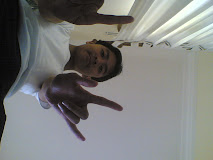
Solar cars combine technology typically used in the aerospace, bicycle, alternative energy and automotive industries. The design of a solar vehicle is severely limited by the energy input into the car (batteries and power from the sun). Virtually all solar cars ever built have been for the purpose of solar car race (with notable exceptions).

The electrical system is the most important part of the car's systems as it controls all of the power that comes into and leaves the system. The battery pack plays the same role in a solar car that a petrol tank plays in a normal car in storing power for future use. Solar cars use a range of batteries including lead-acid batteries, nickel-metal hydride batteries (NiMH), Nickel-Cadmium batteries (NiCd), Lithium ion batteries and Lithium polymer batteries
Races
The two most notable solar car races are the World Solar Challenge and the North American Solar Challenge, overland road rally-style competitions contested by a variety of university and corporate teams.

The World Solar Challenge features a field of competitors from around the world who race to cross the Australian continent, over a distance of 3000 km. The increasingly high speeds of the 2005 race participants has led to the rules being changed for future solar cars starting in the 2007 race Label: Invention



























